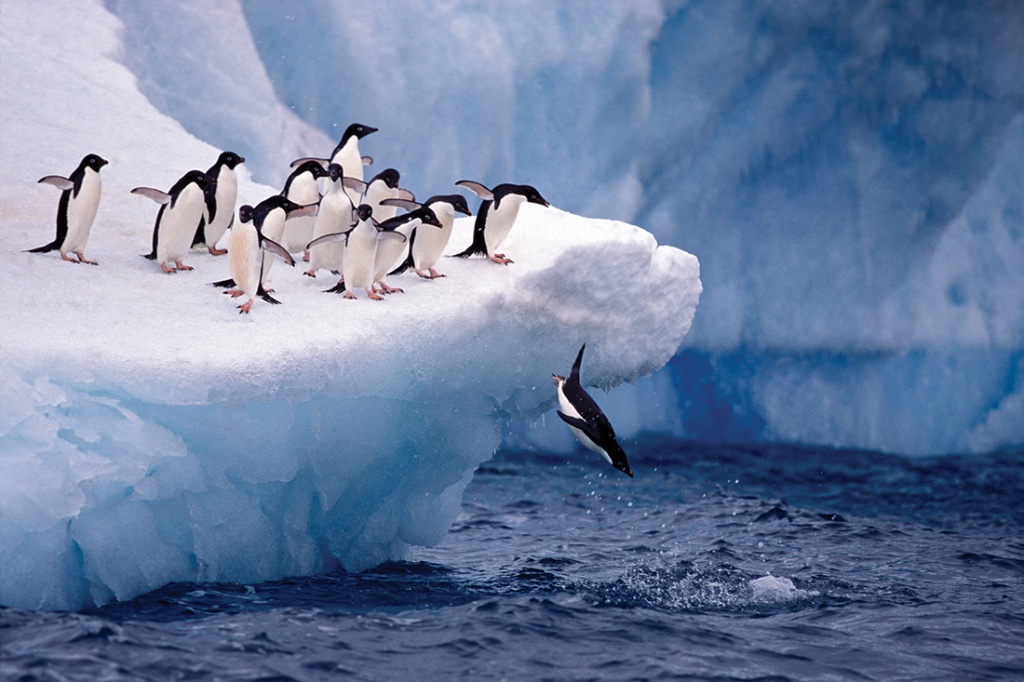
Courage in the Workplace

Standing at the Tip of the Iceberg: How courage can improve the work environment
by Lily Wolfe (’18)
A colony of penguins huddles together to protect their bodies from the full force of the Antarctic weather. One penguin must muster the courage to dive into the icy, predator-infested water. The threat is high. The first penguin is at greater risk of becoming prey, but without this courageous act, the colony could starve.
The story of the “first penguin” has become a metaphor for courageous acts. Courage is arguably one of the most desired characteristics a person can have and is considered one of the top qualities of a successful leader.
“Courage is acting intentionally in the face of risks, threats, or obstacles in the pursuit of morally worthy goals,” says Melissa Koerner, dean of the Bill and Vieve Gore School of Business. Melissa has dedicated her time to researching courage and the effects it can have on individuals in the workplace.
Through listening to the stories of 90 individuals who witnessed acts of courage in the workplace, Melissa learned that though having the courage to take a stance on an issue or do the right thing at work can be daunting, the courageous act is often beneficial for members of the workplace.
Melissa says that courage is a vital part of workplace relations. “Courage at work deals with relationships, power imbalances, or organizational norms or standards, which is why a great sense of risk often occurs when a courageous act takes place,” she says.
Through her research, Melissa learned that though it can have its risks, courage is contagious. One act of courage in the workplace inspires others to also act courageously, resulting in an awakened sense of possibility. Organizational leaders also benefit from courageous acts, but less tangibly. “Courageous acts from employees serve as a signal to organizational leaders and members that boundaries have been crossed,” says Melissa.
When you find yourself standing at the tip of the iceberg, deciding whether or not to act courageously, you first need to weigh the perceived risks, threats, and obstacles. Courageous acts can earn admiration and self-respect, while inaction could be considered cowardice. The penguin needed to take the plunge to avoid starvation. What are some of the consequences of actions you want to take?
Melissa’s research, entitled “Courage as Identity Work: Accounts of Workplace Courage,” was published in the Academy of Management Journal in February 2014.
About the Westminster Review
The Westminster Review is Westminster University’s bi-annual alumni magazine that is distributed to alumni and community members. Each issue aims to keep alumni updated on campus current events and highlights the accomplishments of current students, professors, and Westminster alum.
GET THE REVIEW IN PRINT Share Your Story Idea READ MORE WESTMINSTER STORIES